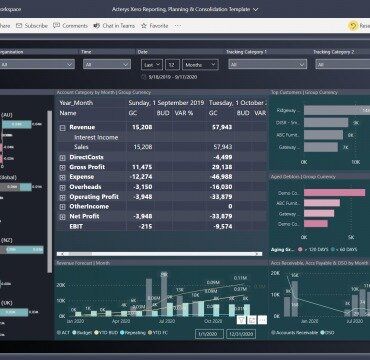Contents:


You can also call double-entry bookkeeping double-entry accounting. Use our balance sheet template in Excel to track your assets and liabilities. Typically, double-entry accounting involves entering one item on the left-hand side as a debit, with another equal item on the right-hand side as a credit. A customer buys sunglasses from your eCommerce store, your sales account goes up, and your inventory account goes down. Entries are described as a “debit” or a “credit,” that increases or decreases the balance of the account.
Understanding General Ledger vs. General Journal – Investopedia
Understanding General Ledger vs. General Journal.
Posted: Sat, 25 Mar 2017 07:41:23 GMT [source]
Positive answers to the questions above mean your business requires double-entry accounting. Having presented a good case for single-entry accounting, we’ll look at double-entry accounting. Gains and Losses – These accounts show how much money a company has gained or lost due to selling items for more than they were bought or buying items for less than their value. Double-entry is composed of 3 main parts, namely the debit, journal, and credit.
These accounts get organized under a Chart of Account or a list of items identified by an organization that will flow in the General Ledger . Eventually, all the transactions collected for a certain period flow in the General Ledger. The event can be a purchase, sale, payment, or receipt of cash. While the system may seem complex initially, with practice and training, it can become second nature and offer significant benefits for businesses. You just sold $1000 worth of wholesale products, on credit, to a customer. Finance Strategists is a leading financial literacy non-profit organization priding itself on providing accurate and reliable financial information to millions of readers each year.
Double Entry Accounting And Why It Matters In Business
Manucci was employed by the Farolfi firm and the firm’s ledger of 1299–1300 evidences full double-entry bookkeeping. Giovannino Farolfi & Company, a firm of Florentine merchants headquartered in Nîmes, acted as moneylenders to the Archbishop of Arles, their most important customer. Some sources suggest that Giovanni di Bicci de’ Medici introduced this method for the Medici bank in the 14th century, though evidence for this is lacking. Essentially, the representation equates all uses of capital to all sources of capital (where debt capital leads to liabilities and equity capital leads to shareholders’ equity). For a company keeping accurate accounts, every single business transaction will be represented in at least of its two accounts. Unlike Single-entry accounting, the double-entry accounting system records each transaction twice–as a debit or credit.
The table shows cashbook entries with specific dates, helping you keep track of your expenses and income. At the end of your accounting week, there’s a balance of $195,000. Equity – The equity is equal to the assets of a business minus its liabilities. It shows how much money would be left for owners if all their financial obligations were paid off. Increase in shareholders equity account will be recorded via a credit entry.

The entry is a debit to the inventory account and a credit to the cash account. The 15th-century Franciscan Friar Luca Pacioli is often credited with being the first to write about modern accounting methods like double-entry accounting. He was simply the first to describe the accounting methods that were already common practice among merchants in Venice.
The Double Entry Accounting System Means Better Business
Fees for services are recorded separately from sales of merchandise, but the bookkeeping transactions for recording sales of services are similar to those for recording sales of tangible goods . Debits and credits serve as the two balancing aspects of every financial transaction in double-entry bookkeeping. An increase to a liability account, such as taking on a loan, is considered a credit, while a decrease to that account, such as paying off a debt, is considered a debit. These assign a monetary value to company-owned resources with current or future business benefit.

Capacity for earning a profit and repaying liabilities can be evaluated with the help of various ratios relating to accounts from financial statements. Under the double-entry system, the total assets and liabilities of a business concern are recorded properly. Under the double-entry system, profit or loss of the company for a particular accounting period can be known by preparing an income statement. For this reason, the total amount of debt will be equal to the total amount of credit. It can be detected through trial balance whether two sides of accounts are equal or not, and thereby the arithmetical accuracy of the account is verified. Double-entry Book-Keeping is a system by which every debit entry is balanced by an equal credit entry.
Double Entry Bookkeeping: T-account Definition
Thus, you are consuming an asset by paying for various expenses. One is a debit to the accounts receivable account for $1,500 and a credit to the revenue account for $1,500. This means that you are recording revenue while also recording an asset which represents the amount that the customer now owes you.
Your books are balanced when the sum of each debit and its corresponding credit equals zero. Contrary to single-entry accounting, which tracks only revenue and expenses, double-entry accounting tracks assets, liabilities and equity, too. Using the double-entry bookkeeping method of recording transactions, a business would record a debit and an equal credit so that the business records balance. This is the most commonly used method of accounting for business transactions. The double-entry bookkeeping system can generate useful financial reports for business owners.
What is the basic rule of double-entry bookkeeping?
This accounting system sets the recordkeeping standards for all financial firms and industries. If there is a mismatch in the records, it is quick enough for accounting professionals to identify errors and rectify the same. DebitDebit represents either an increase in a company’s expenses or a decline in its revenue. While single-entry has its perks when discussing Single entry vs. Double Entry, there are advantages double-entry has over single entry. Having highlighted single-entry and double-entry accounting, we’ll draw a simple comparison to give you a clearer picture of your choice.
In https://bookkeeping-reviews.com/, credit, and debit refer to entries recorded in financial records. A credit entry represents money received or reduced liabilities, while a debit entry represents money paid out or an increase in assets. For instance, when a company receives payment from a customer on credit, it credits its accounts. Similarly, when a business purchases new equipment, it debits its asset account.
This figure, fairly substantial, could mean a huge issue in the closing stock, opening stock, theft, or just an accounting mistake. According to NPR.org, double-entry has its origins in the 1400s when it was used by merchants to keep an accurate record of the goods that they sold. The concept was discovered and formally documented by Luca Pacioli, a monk from Venice who included double-entry in his encyclopedia on math in 1494.
- Without double entry accounting, it is only possible to report an income statement.
- Bookkeeping and accounting are ways of measuring, recording, and communicating a firm’s financial information.
- For example, in the accounting world, when cash is debited, it means the cash on your bank account increased.
- She credits her technology expense account for $1,000 and debits her cash account for $1,000.
On the contrary, the latter is about making two entries simultaneously to two different accounts and marking both the debit and credit sides. Creating A Balance SheetA balance sheet is one of the financial statements of a company that presents the shareholders’ equity, liabilities, and assets of the company at a specific point in time. It is based on the accounting equation that states that the sum of the total liabilities and the owner’s capital equals the total assets of the company.
Everything To Know About Journal And Ledger Entries
The double-entry accounting method was said to be developed independently earlier in Korea during the Goryeo dynasty (918–1392) when Kaesong was a center of trade and industry. The Four-element bookkeeping system was said to originate in the 11th or 12th century. With a double entry system, credits are offset by debits in a general ledger or T-account.
Double entry refers to a system of bookkeeping that, while quite simple to understand, is one of the most important foundational concepts in accounting. Basically, double-entry bookkeeping means that for every entry into an account, there needs to be a corresponding and opposite entry into a different account. It will result in a debit entry in one or more accounts and a corresponding credit entry in one or more accounts. Regarding the transaction, the company records an increase in cash of Rp 3 million.

This information should not be considered complete, up to date, and is not intended to be used in place of a visit, consultation, or advice of a legal, medical, or any other professional. Writing things down is kind of like a double-entry accounting system. You are starting a SaaS company and you need to pay for software hosting. The gravel driveway leads to a lower-level, two-car garage, and also winds past a cobblestone walkway leading to double entry doors topped by a half-moon window. The other two, published in 16th-century Antwerp and London, reflect double entry’s movement west across Europe.
Who Was Richard Stone? What Is Double-Entry Accounting? – Investopedia
Who Was Richard Stone? What Is Double-Entry Accounting?.
Posted: Sat, 25 Mar 2017 17:38:11 GMT [source]
Credits increase revenue, liabilities and equity accounts, whereas debits increase asset and expense accounts. Debits are recorded on the left side of the page and credits are recorded on the right. The sum of every debit and its corresponding credit should always be zero. Double-entry accounting is a method of documenting business expenses and revenue by entering every single transaction as a debit and credit. The way this operates is every transaction involves adding or subtracting money from two different accounts.
It follows that the bookkeeping system must always balance, which is a big advantage. Some types of mistakes will cause the system to be out of balance; as a result, the bookkeeper will be alerted to a problem. It is simpler than the allowance method in that it allows for one simple entry to reduce accounts receivable to its net realizable value.
Single-entry bookkeeping is a record-keeping system where each transaction is recorded only once, in a single account. This system is similar to tracking your expenses using pen and paper or Excel. Double-entry bookkeeping’s financial statements tell small businesses how profitable they are and how financially strong different parts of their business are. You can see how you’ve spent money and how your business is doing. For each transaction, the total debits recorded must equal the total credits recorded. The earliest extant accounting records that follow the modern double-entry system in Europe come from Amatino Manucci, a Florentine merchant at the end of the 13th century.